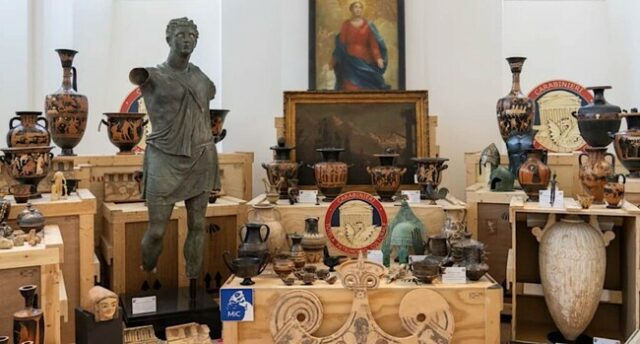
The United States recently returned a significant collection of 600 ancient artifacts, valued at approximately €80 million, to Italy, reaffirming the importance of preserving cultural heritage. These artifacts, which range from the 9th century BCE to the 4th century CE, include Roman coins, a mosaic floor, Umbrian bronzes, military equipment, oil paintings, sculptures, and various pottery pieces. They were illicitly excavated or stolen from regions such as Calabria, Campagna, Puglia, Sicily, and Lazio. The Art Trafficking Unit (ATU) of the Manhattan District Attorney’s Office, led by Prosecutor Matthew Bogdanos, played a crucial role in their recovery, often seizing items from private collections and convincing museums to return pieces based on compelling evidence of their illicit origins.

Collaboration between the ATU and Italy’s Carabinieri for the Protection of Cultural Heritage, who utilize the Stolen Works Of Art Detection System (SWOADS), was instrumental in this operation. General Francesco Gargaro highlighted that stolen artifacts lose not only their physical presence but also their historical context, which is vital for archaeological research. The collection includes notable relics like a well-preserved Umbrian bronze statue, 2,400-year-old bronze heads, and a mosaic floor depicting Orpheus. Bogdanos emphasized that while local looting may be difficult to prevent, controlling the trade of these artifacts in the West can mitigate such losses. Under the leadership of District Attorney Alvin Bragg, the ATU has recovered and returned over 1,000 antiquities from 27 countries, highlighting Manhattan’s pivotal role in combating art trafficking and repatriating stolen heritage.














